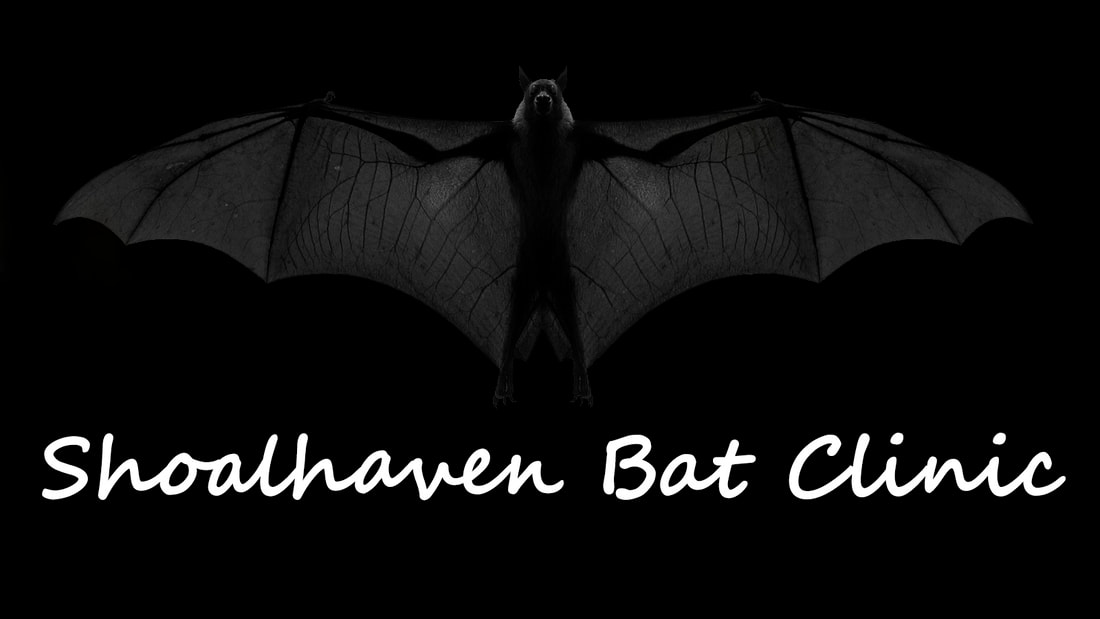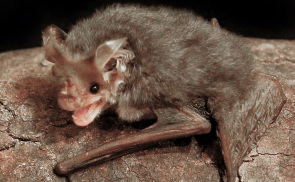BATS
|
WARNING! Never handle bats unless you are a vaccinated wildlife carer. A small percentage of bats are known to carry Australian Bat Lyssavirus, which is dangerous to humans. If you are scratched or bitten by a bat, you must seek medical attention without delay, and request post-exposure treatement for Lyssavirus. Found a bat needing help?If you find a bat needing help, do not to touch it. Even Microbats can carry Lyssavirus. You should:
Helping Bats at home |
MegabatsThese are mostly flying foxes (or fruit-bats). the Grey-headed Flying fox is the most common in our area. Adults are quite large, weighing up to 1Kg, with wing spans of over a metre. They mostly eat blossom from eucalypt trees and native fruits such as the fig. But when native food is scarce they look for fruit trees - which is when they get into trouble, especially when the trees have been poorly netted.
Megabat ProblemsFor Megabats the most common problems are barbed wire and tree netting entanglement. Some are caught on power lines, and in extreme weather, young flying foxes can suffer heat stroke and if not treated, will die.
Bats can suffer life-threatening damage to their wings, mouth and body from entanglement. The damage is not always obvious to a casual observer, but even bruised wings can have fatal consequences if not treated. |
MicrobatsThese are also referred to as insectivorous bats. They are quite small - as little as 5 grams! Unlike mega-bats, these guys use echo-location to find their prey, even on the darkest nights. They eat mostly insects including moths and mosquitoes.
Microbat ProblemsMICROBATS come into care for a variety of reasons:
|
- If possible, don't use barbed wire on your property. There are now alternatives for keeping pets and livestock in place
- When netting fruit trees, Use wildlife friendy netting, stretched taut over a frame. Never use monofilament or black netting.(more about wildlife-friendly netting)
- Attract mosquito-eating bats by erecting a bat-box! Check our this Youtube video or ABC Website.
RESOURCES
Bats are really fascinating. Loved as lucky animals in some parts of the world, hated by some agriculturalists, feared as mythological 'devils' by some and studied by scientists for their amazing resistance to viral infection. If you'd like to learn more about bats, here are a couple of good places to start:
Bats are really fascinating. Loved as lucky animals in some parts of the world, hated by some agriculturalists, feared as mythological 'devils' by some and studied by scientists for their amazing resistance to viral infection. If you'd like to learn more about bats, here are a couple of good places to start:
This page last updated August 2019






